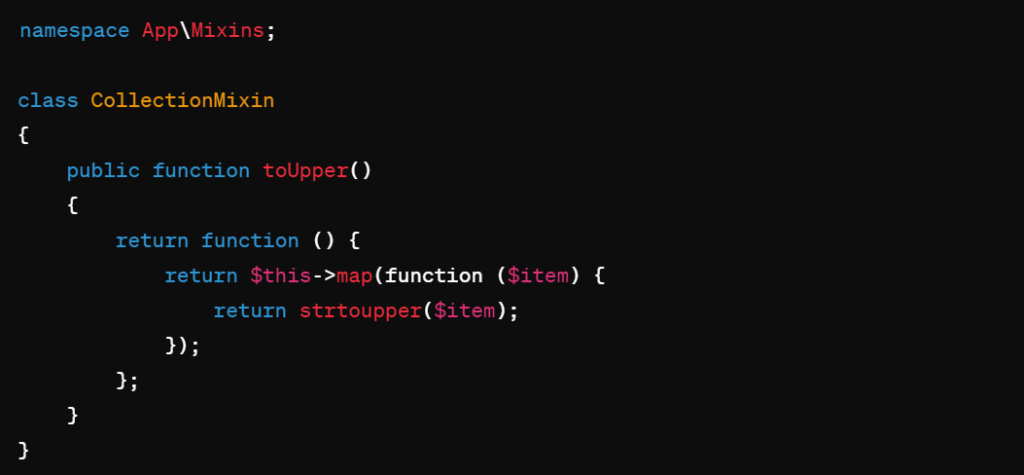In the fast-evolving landscape of web development, Laravel has consistently stood out as one of the most popular PHP frameworks, celebrated for its elegant syntax and robust features. For years, developers have relied on macros to extend Laravel’s functionality, adding custom methods to existing classes with ease. However, a new, more powerful tool is emerging that promises to make macros a thing of the past: mixins. Let’s delve into how mixins can revolutionize Laravel development, providing greater flexibility, maintainability, and scalability.
Understanding Macros
Macros in Laravel allow developers to add custom methods to built-in Laravel classes at runtime. This capability has been particularly useful for extending the functionality of core components like collections, request objects, and more. Here’s a quick example of a macro:

While macros offer a convenient way to augment Laravel classes, they come with certain limitations. Macros are bound to specific classes, making them less flexible when dealing with different types of objects. Moreover, they can become unwieldy in large applications, leading to potential maintenance challenges.
Enter Mixins: A Better Alternative
Mixins provide a more modular and reusable approach to extending classes. They allow developers to create small, self-contained units of behavior that can be applied to any class, offering a higher degree of reusability and separation of concerns.
Here’s how you can define and use a mixin in Laravel:
Defining a Mixin
A mixin is essentially a class with methods that can be injected into other classes. For instance, let’s create a mixin that adds a toUpper method:

Applying a Mixin
To apply this mixin to the Collection class, you can use the Mixin trait:

This approach is cleaner and more maintainable, allowing you to encapsulate related functionality within a single class and apply it wherever needed.
Advantages of Mixins Over Macros
- Modularity and Reusability. Mixins promote better organization of code by encapsulating related methods within a single class. This makes it easier to manage and reuse functionality across different parts of your application.
- Improved Maintainability. By isolating methods within mixin classes, you can reduce the complexity of your codebase. Each mixin class has a single responsibility, adhering to the Single Responsibility Principle (SRP), which is a cornerstone of maintainable code.
- Enhanced Testability. Testing mixins is straightforward since each mixin can be tested in isolation. This leads to more reliable tests and easier debugging.
- Flexibility. Mixins are not tied to specific classes. You can apply a mixin to any class that needs the functionality, making it a more flexible solution compared to macros.
- Scalability. As your application grows, mixins help keep your code organized. You can easily add new mixins or modify existing ones without the risk of affecting unrelated parts of your application.
While macros have served the Laravel community well, mixins represent a more robust and flexible alternative for extending the framework’s functionality. By embracing mixins, developers can write cleaner, more maintainable, and scalable code, ultimately leading to more efficient and effective development workflows.
As Laravel continues to evolve, integrating mixins into your development practices will ensure that your applications remain modern, maintainable, and ready to meet the challenges of tomorrow. Say goodbye to macros and hello to the future of Laravel development with mixins!




